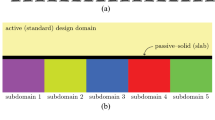Abstract
As a material-additive process, rapid prototyping (RP) has shown its capability in creating complex geometries that traditional material-removal processes cannot accomplish. However, its layer manufacturing nature still subjects itself to undesired staircase effects. It has been shown that staircase effects have relationship with the building orientation in RP processes. In order to minimize staircase effects, the building orientation has to be properly selected prior to the implementation of RP processes. This paper presents a method to select the optimal building direction in RP processes that leads to the minimized volumetric error. In order to explore the global directional space, a unit sphere is uniformly discretized first to represent the potential directions in a 3-dimensional (3-D) space. Following that, each facet comprising the STL geometric model is mapped onto the discretized unit sphere as a great circle individually, which represents the optimal directions for that facet. In order to find the globally optimal solution, both an exhaustive search and a genetic algorithm (GA)-based searching strategy are presented to identify the globally optimal direction for building the 3-D geometry. At the end of the paper, examples are presented to show the effectiveness of the method.
Similar content being viewed by others
References
Pham D, Dimov S, Gault R (1999) Part orientation in stereolithography. Int J Adv Manuf Technol 15:674–682
Allen S, Dutta D (1995) Determination and evaluation of support structures in layered manufacturing. J Des Manuf 5:153–162
Thompson DC, Crawford RH (1995) Optimizing part quality with orientation. Proceedings of the 1995 Solid Freeform Fabrication Symposium, Austin, Texas
Sabourin E, Houser SA, Bhn JH (1996) Adaptive slicing using stepwise uniform refinement. Rapid Prototyping Journal 2(4):20–26
Mani K, Kulkarni P, Dutta D (1999) Region-based adaptive slicing. Comput Aided Des 31(5):317–333
Ma W, But W, He P (2004) NURBS-based adaptive slicing for efficient rapid prototyping. Comput Aided Des 36(13):1309–1325
Pandey PM, Ready NV, Dhande SG (2003) Slicing procedures in layered manufacturing: a review. Rapid Prototyping Journal 9(5):274–288
Rattanawong W, Masood SH, Iovenitti P (2001) A volumetric approach to part-build orientations in rapid prototyping. J Mater Process Technol 119:348–353
Masood SH, Rattanawong W (2002) A generic part orientation system based on volumetric error in rapid prototyping. Int J Adv Manuf Technol 19:209–216
Vosniakos GC, Maroulis T, Pantelis D (2007) A method for optimizing process parameters in layer-based rapid prototyping. Proc IME B J Eng Manufact 221–1329
Byun HS, Lee KH (2006) Determination of the optimal build direction for different rapid prototyping processes using multi-criterion decision making. Robot Comput Integrated Manuf 22:69–80
Ahn D, Kim H, Lee S (2007) Fabrication direction optimization to minimize post–machining in layered manufacturing. Int J Mach Tool Manuf 47:593–606
Giannatsis J, Dedoussis V (2007) Decision support tool for selecting fabrication parameters in stereolithography. Int J Adv Manuf Technol 33:706–718
Canellidis V, Giannatsis J, Dedoussis V (2009) Genetic-algorithm-based multi-objective optimization of the build orientation in stereolithography. Int J Adv Manuf Technol 45:714–730
Padhye N, Deb K (2011) Multi-objective optimisation and multi-criteria decision making in SLS using evolutionary approaches. Rapid Prototyping Journal 17(6):458–478
Chen LL, Woo TC (1992) Computational geometry on the sphere with application to automated machining. ASME J Mech Des 114:288–295
Chen LL, Chou SY, Woo TC (1993) Parting directions for mould and die design. Comput Aided Des 25(12):762–768
Bergersen B, Boal D, Muhoray PP (1994) Equilibrium configurations of particles on a sphere: the case of logarithmic interactions. J Phys A Math Gen 27:2579–2586
Rakhmanov EA, Saff EB, Zhou YM (1994) Minimal discrete energy on the sphere. Math Res Lett 1:647–662
Glasser L, Every AG (1992) Energies and spacings of point charges on a sphere. J Phys A Math Gen 25:2473–2482
Saff EB, Kuijlaars ABJ (1997) Distributing many points on a sphere. Math Intell 19(1):5–11
Lubotzky A, Phillips R, Sarnak P (1986) Hecke operators and distributing points on the sphere I. Comm Pure App Math 39:149–186
Holland JH (1975) Adaptation in natural and artificial systems. University of Michigan Press, Ann Arbor
Goldberg DE (1989) Genetic algorithms in search, optimization and machine learning. Addison-Wesley, Boston
Mitchell M (1996) An introduction to genetic algorithms. MIT Press, Cambridge
Schmitt LM (2001) Theory of genetic algorithms. Theor Comput Sci 259:1–61
Author information
Authors and Affiliations
Corresponding author
Rights and permissions
About this article
Cite this article
Zhang, J., Li, Y. A unit sphere discretization and search approach to optimize building direction with minimized volumetric error for rapid prototyping. Int J Adv Manuf Technol 67, 733–743 (2013). https://doi.org/10.1007/s00170-012-4518-0
Received:
Accepted:
Published:
Issue Date:
DOI: https://doi.org/10.1007/s00170-012-4518-0




